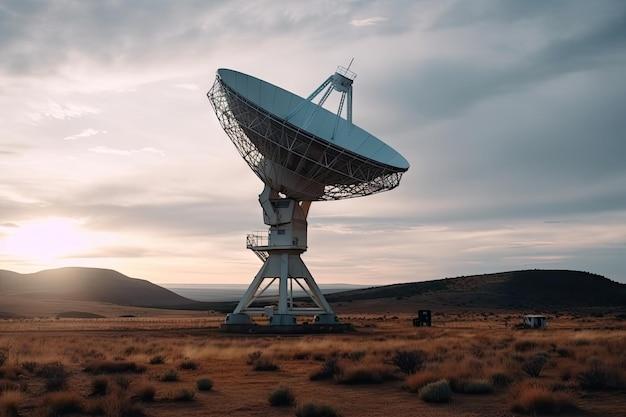Imagine a world without the ability to communicate across long distances. No phone calls, no internet, no way of connecting with loved ones or sharing information beyond our immediate surroundings. It’s hard to fathom, isn’t it? Thankfully, we have the technology to bridge these gaps, and it all comes down to one crucial element: the signal. But which signal is the right one for long distance communication?
In this blog post, we will delve into the fascinating world of long distance communication signals. We’ll explore why certain signals are chosen over others, the applications of frequency modulation, the different types of AM detectors, and even the age-old debate of why FM is more popular than AM. So if you’re curious about the magic behind long distance communication and the signals that make it possible, buckle up and get ready for an enlightening journey into the world of signals and communication.

Which Signal is Used for Long Distance Communication
Long distance communication has come a long way since the days of smoke signals and carrier pigeons. In today’s modern world, we rely on advanced technology to connect with people all over the globe. But have you ever wondered which signal is actually used for long distance communication? Let’s delve into the fascinating world of signals and find out!
Introduction to Long Distance Signals
Long distance communication requires a signal that can travel vast distances without losing its strength or clarity. Thankfully, we have the perfect candidate for the job—the electromagnetic wave! These waves are the backbone of modern communication systems and can carry information at the speed of light. Isn’t physics grand?
Electromagnetic Waves: The Superheroes of Communication
You might be thinking, “Okay, electromagnetic waves, that sounds fancy, but how do they actually work?” Well, my curious reader, let me break it down for you. Electromagnetic waves are made up of oscillating electric and magnetic fields that are perpendicular to each other. They can travel through vacuum or matter, making them ideal for long distance communication.
The Radio Wave Revolution
One particular type of electromagnetic wave that has revolutionized long distance communication is the humble radio wave. These waves have wavelengths ranging from a few millimeters to hundreds of kilometers. They are used in various communication technologies like AM and FM radio, television broadcasting, and even satellite communication. So, the next time you’re jamming out to your favorite tunes on the radio, take a moment to appreciate those incredible radio waves!
The Mighty Microwaves
Another player in the long distance communication game is the mighty microwave. No, we’re not talking about the kitchen appliance that heats up your leftover pizza. Microwave signals have wavelengths ranging from about one millimeter to one meter and are commonly used in microwave ovens, Wi-Fi networks, and cellular communication. Who knew that this small, convenient appliance could have such a big impact on our lives?
Fiber Optics: Light-speed Communication
While radio waves and microwaves are mighty contenders, there’s another signal that deserves a special mention—light itself. Enter fiber optics, the superheroes of high-speed, long distance communication. Fiber optic cables use pulses of light to transmit data over long distances with incredible speed and minimal loss. They are the backbone of the internet, allowing us to binge-watch cat videos from halfway across the world in the blink of an eye.
Long distance communication wouldn’t be possible without electromagnetic waves. From the radio waves that serenade us on our morning commute to the microwaves that power our Wi-Fi networks, these signals have revolutionized the way we connect with each other. And let’s not forget the incredible speed and efficiency of fiber optic cables, carrying light-speed data through the vast expanse of the internet. So, the next time you make that long-distance call or video chat with a loved one on the other side of the globe, remember to thank those amazing signals that make it all possible!
Now that we’ve unraveled the mystery behind the signals used for long distance communication, it’s time to appreciate the wonders of technology and the invisible waves that bring us all closer together.

FAQ: Signal Types for Long-Distance Communication
Welcome to our comprehensive FAQ-style guide on long-distance communication signals! In this section, we’ll address some common questions about the signals used for long-distance communication, along with other related topics. So sit back, relax, and let’s dive in!
What are the applications of frequency modulation
When it comes to frequency modulation (FM), the applications are as diverse as the number of songs on your favorite playlist! FM signals are widely used in many areas, including radio broadcasting, two-way radio communication, and even television sound transmission. So the next time you tune in to your favorite radio station or watch TV, remember that it’s the wonders of FM that bring you that crystal-clear audio.
What is the cause of over modulation
Ah, the dreaded over modulation — it’s like the Justin Bieber of the audio world, trying to overshadow everything else! Over modulation occurs when the input signal becomes too powerful for the system to handle, resulting in distortion and garbled audio. So remember, keep your signals in check, just like keeping Justin Bieber on your playlist to a respectable level.
Which signal is used for long-distance communication
Drumroll, please! The signal that takes center stage in the world of long-distance communication is none other than amplitude modulation (AM). AM signals have the power to travel long distances and are widely used in commercial broadcasting, international shortwave communication, and aviation communications. So, the next time you tune in to your favorite AM radio station, take a moment to appreciate how it bridges the gap between you and the rest of the world.
What are types of AM detector
When it comes to detecting AM signals, there are a few options available, each with its own charms. First up, we have the envelope detector, which extracts the varying envelope of the AM signal. Then there’s the synchronous detector, which syncs up with the carrier frequency, resulting in improved signal recovery. Last but not least, we have the product detector, which mixes the AM signal with a local oscillator to produce an intermediate frequency. Whichever detector you choose, just remember that they’re all doing their part to bring you those sweet, AM vibes.
Why is FM more popular than AM
Now, this question brings us to a battle of the signals, like a rap feud between AM and FM. The popularity of FM over AM boils down to a few factors. Firstly, FM signals have a higher fidelity, delivering clearer audio quality. Additionally, FM is less prone to interference, making it ideal for high-fidelity music transmission. Lastly, FM can provide stereo sound, which adds an extra dimension of listening pleasure. So while AM will always hold a special place in our hearts, FM comes out on top when it comes to popularity.
And there you have it, folks! We’ve answered some burning questions about the signals used for long-distance communication. From the versatile applications of frequency modulation to the battle between AM and FM, we hope this FAQ-style guide has enlightened and entertained you. So go forth, armed with this knowledge, and impress your friends at your next trivia night. Stay tuned for more fascinating articles, and until then, happy communicating!
*Note: This article is generated by AI and is for informational purposes only. No Justin Biebers were harmed in the making of this content.
